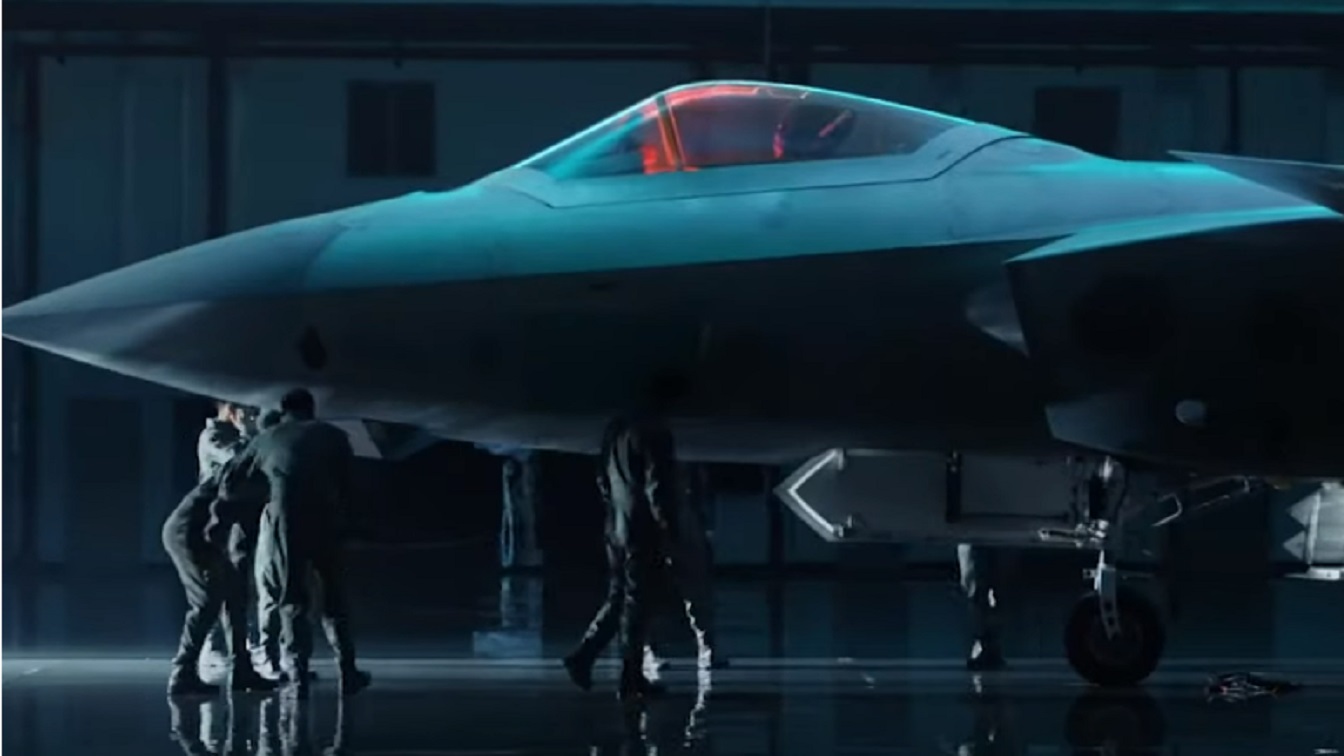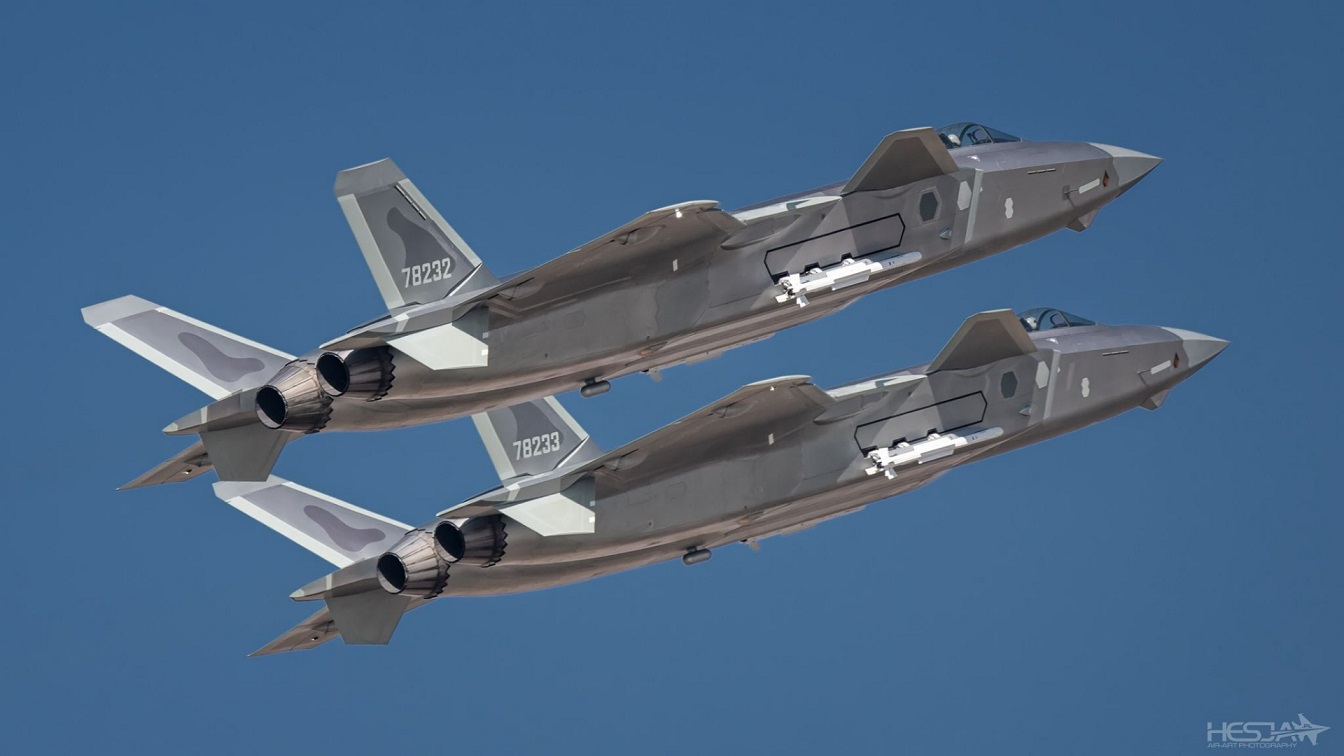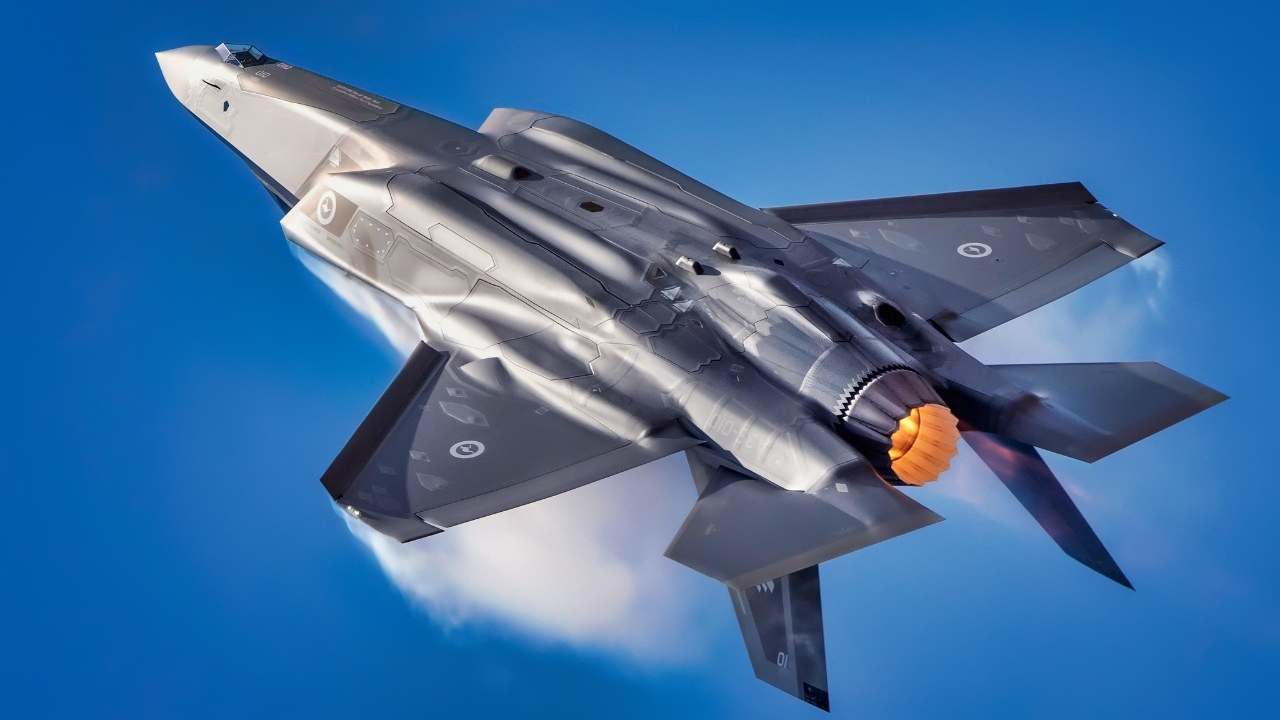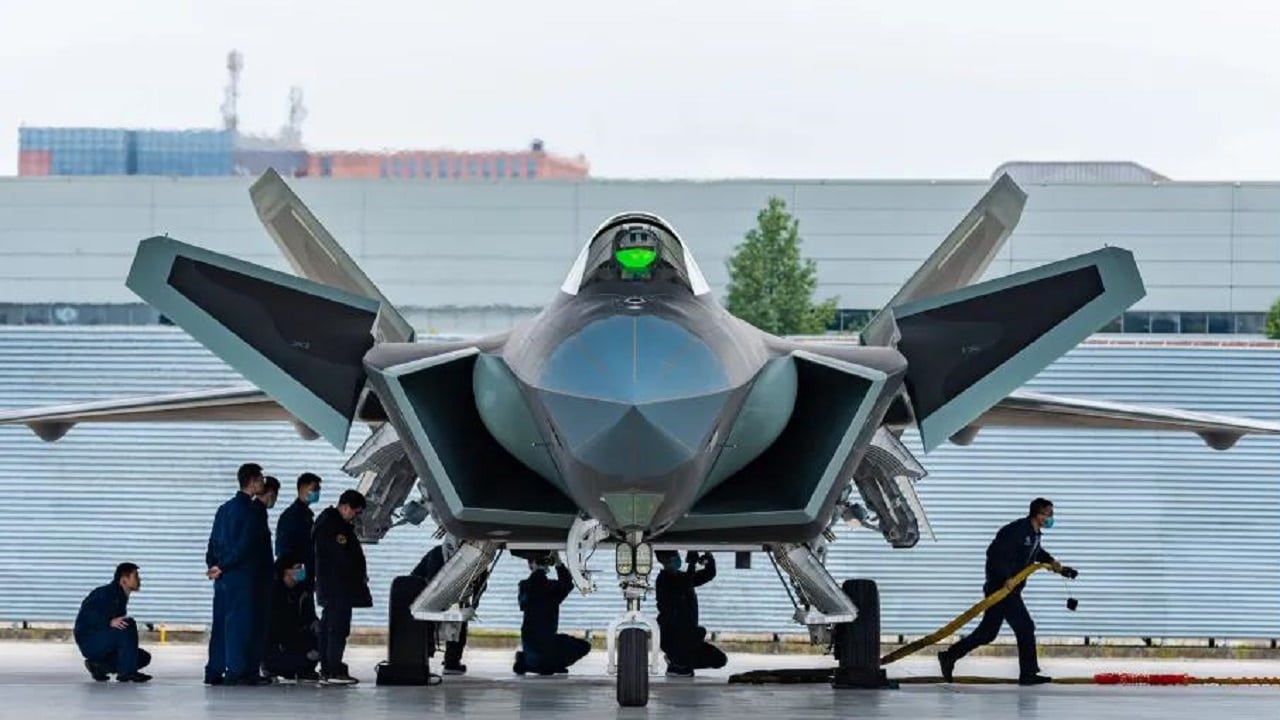Article Summary – China’s J-20 Mighty Dragon is known for Mach 2 speed and stealth, but it also hides a very different role: high-capacity “bomb truck.”
-Open data suggest it can launch with nearly 28,000 pounds of ordnance—far more than a fully loaded F-35—turning it into a long-range missile hauler for PL-15 air-to-air weapons designed to kill tankers, ISR aircraft, and fighters from standoff range.

J-20. Image Credit: Creative Commons.

J-20 Fighter. Image Credit: Chinese internet.
-Photos of J-20s bristling with eight external missiles highlight that concept.
-The trade-off is severe: external pylons and weight wreck its low observable profile and performance, forcing Beijing to choose between stealth and sheer volume of fire.
China’s J-20 Mighty Dragon Has Beast Mode
The Chinese J-20 is well known for its Mach 2.0 speed and 5th-generation stealth configuration; yet, beneath the surface of these more visible or widely discussed performance parameters, the People’s Liberation Army Air Force (PLAAF) J-20 also operates with a lesser-known, unique “bomb-truck” type of capability.
Available specifications on the J-20 indicate that the aircraft can take off with 27,988 pounds of internal and external ordnance, an amount significantly larger than that of a fully loaded F-35, which can fly with 18,000 pounds of weapons.
Arming the airframe with maximum weapons and bomb-carrying capacity, often referred to as “beast mode,” enables an aircraft to deliver a significantly larger volume of weapons on a single mission, which reduces risk to other airplanes, minimizes refueling, and potentially extends dwell time over targets.
J-20 Beast Mode
Newly emerging photos appearing on X, showing the aircraft fully armed with as many as eight air-to-air missiles beneath the wings, thrust the question of ‘beast mode’ on the J-20 into the spotlight.
Speculative observations made by a Chinese military expert researcher regarding the J-20 posting raised the question of whether the missiles were beyond visual range, PLAAF PL-15 air-to-air missiles.
The Aviationist cited photo credit for the fully armed J-20 as “Via Weibo via Andreas Rupprecht on X.”
Whether the missiles in the photograph were PL-15s is unconfirmed; however, the question was posed in the X posting by Rupprecht.
PLAAF PL-15
The Chinese PL-15 Thunderbolt, as it is referred to, is reported to be capable of traveling 200km to hit targets, a range that may or may not compete with the classified range of the US Air Force’s AIM-120D.

J-20 Stealth Fighter. YouTube Screenshot.

J-20 Stealth Fighter. Image Credit: Creative Commons.

J-20. Image Credit: Chinese Internet.
Software upgrades, such as the fleet-wide 3.2b upgrade for the F-22, have increased the range, guidance, and durability of the AIM-120D.
Nevertheless, the ability to fly with as many as eight air-to-air missiles on external pylons or hardpoints suggests that the J-20 can operate with substantial air-to-air long-range firepower.
This is the kind of weapon that could be used to destroy tankers, surveillance planes, transport aircraft, helicopters, or even fighter jets from stand-off ranges.
The Aviationist makes an interesting point that the PLAAF’s Concept of Operations may be to leverage the J-20’s stealth capabilities to maneuver into long-range strike positions against otherwise unreachable US and allied aircraft.
In the event that sensing, targeting, and radar ranges between the J-20, F-35, and F-22 were comparable, the range and precision of an air-to-air missile would be a defining factor in which aircraft prevailed in an air-to-air conflict.

F-35 fighter. Image Credit: Creative Commons.

The 388th Fighter Wing’s F-35 Lightning II fifth-generation fighter cruises in Eastern European airspace, Feb. 28, 2022, in support of NATO’s collective defense. U.S. Air Forces in Europe – Air Forces Africa’s ability to support and integrate with NATO’s air policing missions continually hardens the alliance’s solidarity, collective resolve, and ability to adapt to a dynamic warfighting environment. (U.S. Air Force photo by Airman 1st Class Edgar Grimaldo)
This may be why the US Air Force is fast-tracking the high-speed, long-range AIM-120 air-to-air weapon.
This now-in-development weapon is slated to replace the existing AIM-120D as an air-to-air missile, so it’s conceivable that the AIM-260 is being fast-tracked to equal or out-range the PLAAF PL-15.
Stealth & Speed for J-20
However, it is naturally self-evident that a fully loaded J-20 with weapons on external hard points would not operate with speed and stealth.
The J-20’s speed would be compromised by the sheer weight of the weaponry, and external weapons would, of course, offer ground-based radar more contours, shapes, and edges off of which to bounce an electromagnetic signature.
This means a fully-loaded “bomb-truck” type of J-20 would likely be challenged to remain undetected at ranges from which it might seek to attack.
About the Author: Kris Osborn, Warrior Maven President
Kris Osborn is the President of Warrior Maven – Center for Military Modernization. Osborn previously served at the Pentagon as a highly qualified expert in the Office of the Assistant Secretary of the Army—Acquisition, Logistics & Technology. Osborn has also worked as an anchor and on-air military specialist at national TV networks. He has appeared as a guest military expert on Fox News, MSNBC, The Military Channel, and The History Channel. He also has a Masters Degree in Comparative Literature from Columbia University.

